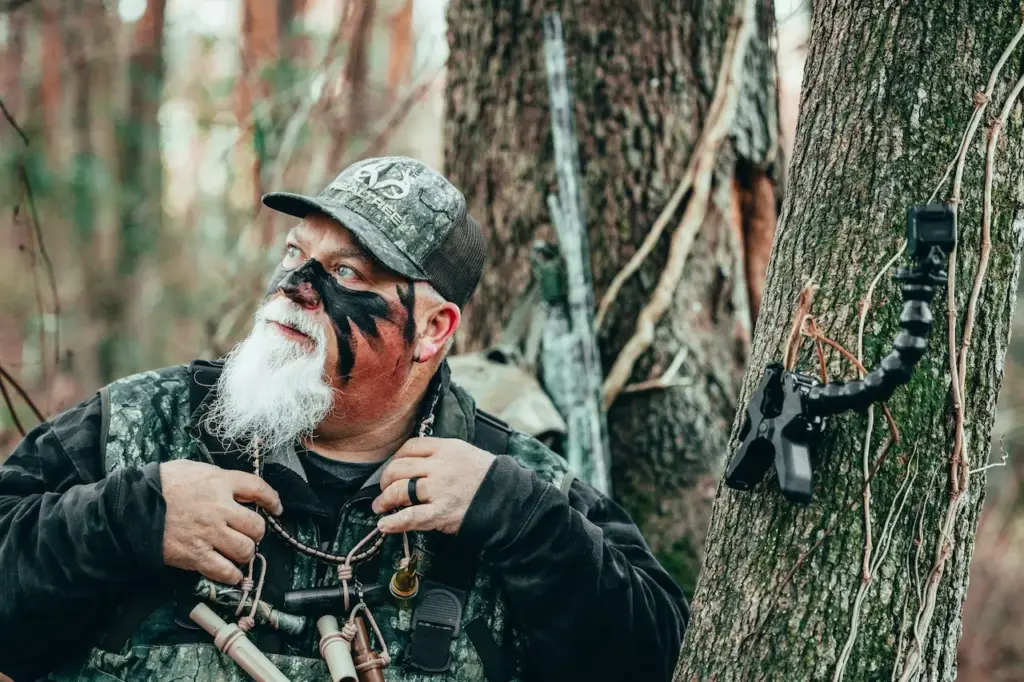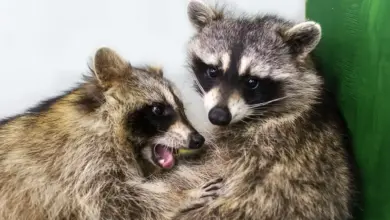Looking for the best ducks to hunt? Of the waterfowl pursued by avid North American hunters, wild ducks continue providing the most abundant and rewarding targets across every migration season.
Duck hunting draws deeply from long-held hunting traditions interwoven into the cultural fabric of rural communities where skies darken each year with arriving flocks. Their prized meat also graces many family dinner tables.
In this article, we will explore characteristics of the most popular and rewarding wild ducks pursued by hunters throughout annual fall and spring migrations across waterfowl hunting hotspots. When hunting wildlife, make sure you understand all the laws and have all the permits in place before starting out on a hunting adventure.
We will also overview effective hunting strategies tailored to capture specific duck species based on insider experiences. Welcome, waterproof waders and camouflage face paint – the vivid world of duck hunting awaits!

New to hunting? Read: Duck Hunting For Beginners
Beginner Big Four Species
For novice duck hunters just getting started, four common, larger-bodied ducks provide good practice targets to build experience.
Their broad North American ranges and populations ensure steady action. While small and fast teal may buzz tantalizingly past, bagging at least one of the following ducks represents a successful maiden hunt.
Mallard
No duck defines waterfowl hunting more than the mallard, with iconic iridescent green heads and curving white neck bands seen lowering landing gears on secluded ponds.
Upwards of 10 million migrate down the Central and Mississippi flyways from Canadian breeding grounds each fall, making mallards the most abundant duck species.
Their adaptability allows year-round survival across most of North America near water bodies and flooded fields. Vigorous quacking gives away hovering descending flocks before cupped wings stall for splashy pond touchdowns.
Mallard ducks present a slightly larger profile and steadier flight trajectory compared to other ducks – ideal attributes for new-wing shooters.
Northern Pintail
Living up to its streamlined name, the pintail duck built for speed makes for a more challenging but satisfying early target.
Skewering through the air at up to 60 mph, only eagles and falcons match these acrobatic ducks’ sheer agility on rapid twisting flights from field feeds to roosting lakes.
From a distance, pintails present a nondescript grayish-brown duck shape. But move closer, and their chocolate head, white breast, and exquisite, elongated central tail feathers become unmistakable.
Greater wing surface area allows airborne maneuverability, explaining the need for lightning reflexes to connect. But bag your first pintail, and a duck-hunting obsession likely takes swift flight.
Northern Shoveler
Unconventional spatula-shaped beaks give this common dabbling duck away while upending to filter feed along marshy shorelines or floating vegetation mats.
Large, distinctive spoonbills and associated nerves provide shovelers with superior tactile capability to extract seeds and aquatic invertebrates by touch.
Breeding male’s dark green heads, white chests, and rusty flank patches contrast neatly with females’ plain brown plumage. Both exhibit bold white wing patches revealed when banking across open wetlands.
About 4 million Shovelers follow Central Flyway routes down into Mexico. Groups dropping into shallow, flooded fields offer beginners chances to practice long-distance shots.
American Wigeon
Smaller and faster than mallards, American wigeons nevertheless share a similar breeding and migration range spanning subarctic Canada southwards through the Great Plains and Central Valley.
Males stand out when flocks feed in marshes with distinct white foreheads and light green eye patches to go along with gray bodies and white bellies.
The wigeon’s connoisseur whistling “whew whew call emanating from wetlands signals incoming birds dropping in against sunrise skies. This medium-sized duck bobs and weaves more rapidly than chunky mallards, keeping shooters alert.
But wigeons tend to follow predictable circling patterns, returning to preferred water holes and croplands awash in waste grains – fall in line to intercept these looping travelers.

Top Challenge: The Acrobatic Teal
For dedicated waterfowlers well-versed in duck nuances and behavior, small blur-fast teal delivers the ultimate hunting challenge.
Teal resides on the opposite end of the duck spectrum from lumbering mallards in both size and speed categories. Four teal species thrill hunters during spring and fall flights across central and coastal wetlands.
Weighing less than one pound with wingspans under 20 inches enables astounding midair agility, challenging even expert marksmen. Whistling wings make aiming lead distances difficult.
But their very maneuverability also attracts hunters seeking the ultimate wing-shooting rush certain duck species simply can’t provide.
Teal also flock in the hundreds – presenting wonderful shooting opportunities for well-prepared blinds set up off potholes and lakes.
Their propensity to swing back around towards hovering groups offers multiple chances at fast-moving targets. Below, we highlight traits for the two most common wildly zigzagging teals in North America.

Green-winged Teal
The smallest duck species on the continent, diminutive green-winged teal migrate in staggering numbers across North America – up to 3 million following the Pacific Flyway alone during peak fall flights.
Abundance and blinding swiftness make these tiny ducks a signature challenge for seasoned veterans and sporting clay enthusiasts appreciating erratic speed.
As the name suggests, electric lime green wing patches set off from scaled brown and tan speckled bodies signal inbound green-winged teal flocks whizzing mere feet above the vegetation.
The birds earned “small butterballs” nicknames thanks to plump builds that withstand frigid northern winters above the 45th parallel. Listen for high quacking sounds accompanying blurred vision barreling past shooting blinds.
Blue-winged Teal
Sharing the distinction with green wings as the tiniest ducks, blue-winged teal truly pushes wing-shooting skills towards artistry levels. Like mini stunt planes, males and females alike dash and dive fearlessly with shrill whistles.
Their namesake powder blue wing patches set males apart while courting mates across prairie pothole habitats spanning from Alberta through Manitoba into the Great Lakes region and Gulf Coast states.
Come September, gathering flocks retreat south towards Mexico, mixing in expanding green-wing numbers – bursting wetlands with overwhelmed hunters in their wake.
While sharing green-wing traits like minuscule sizes and ultra-maneuverability, blue-wings tend to fly even lower and faster, making lead distances almost impossible to gauge.
Specialty Species: Regional Favorites
Beyond ubiquitous mallards and acrobatic teal sprinters, specialty regional ducks also ignite local hunter passions during narrow migration windows.
Whether prioritizing delicious meat or prizing beautiful feathers, certain species ignite friendly rivalries across celebrated hunting havens. We highlight key details on two ducks sparking dedicated hunting pilgrimages when seasonal conditions align.
Wood Duck
Dapper “woody” drakes adorned with elegant hair-like head crests dazzle forested wetlands when spring mating rituals commence. Their namesake preference for nesting in tree cavities locations near swamps sets them apart from other puddle ducks.
Fortunately, hardy wood ducks rebounded substantially following dedicated nest box programs and strict hunting protections in place during the early 1900s.
Once considered rare, wood duck numbers are estimated to be around 3.5 million today, drawing dedicated hunters towards bottomland hardwood corridors like legendary Missouri Breaks or Louisiana’s Atchafalaya River Basin as temperatures moderate.
Hunters lucky enough to fill bags with these exquisitely plumed ducks often save whole specimens for decorative mounting purposes despite their reputation for top table fare.
Redhead Duck
For hunting parties around the Great Salt Lake eying mixed flocks on cold, overcast days, ubiquitous rafting redheads deliver delightful rewards.
Males sport a distinctive cinnamon head and black chest easily spotted amid females’ drab gray plumage while riding island marsh waves.
Four million redheads follow the Central Flyway from prairie pothole nesting zones towards prime wintering grounds on Utah’s freshwater lacustrine wetlands.
Hardy redheads feast on aquatic invertebrates, while other puddle ducks avoid them, relying less on vegetation. This flexibility allows exploiting both shallow and deep lake habitats across staging sites.
Want to know about gun laws? Read: Gun Laws By State
Conclusion
For North American hunters, few wing-shooting pursuits match the thrill of duck hunting when fall migration is in full swing. The diversity of duck species in terms of size, speed, coloration, and preferred habitat allows for dynamic adventures spanning the continent.
Mallards may reign as the classic duck hunting prize, but the acrobatic challenge posed by small blur-fast teal also captivates seasoned veterans.
Regional specialty ducks like iridescent wood ducks in Southern bottomlands or abundant rafting redheads on the Great Salt Lake also ignite passions during narrow yearly windows.




